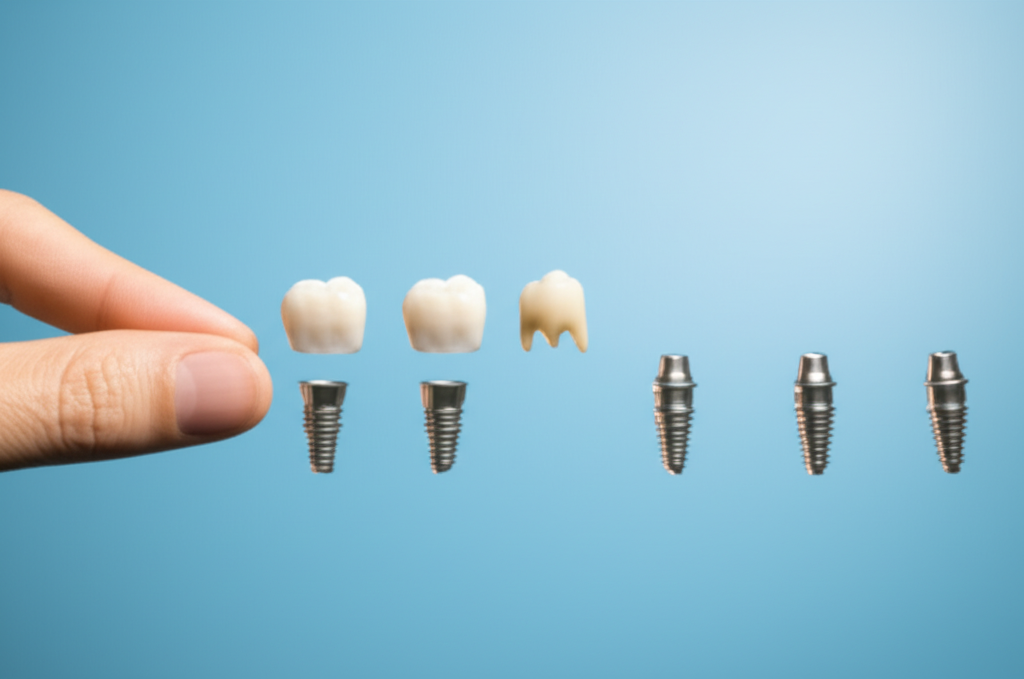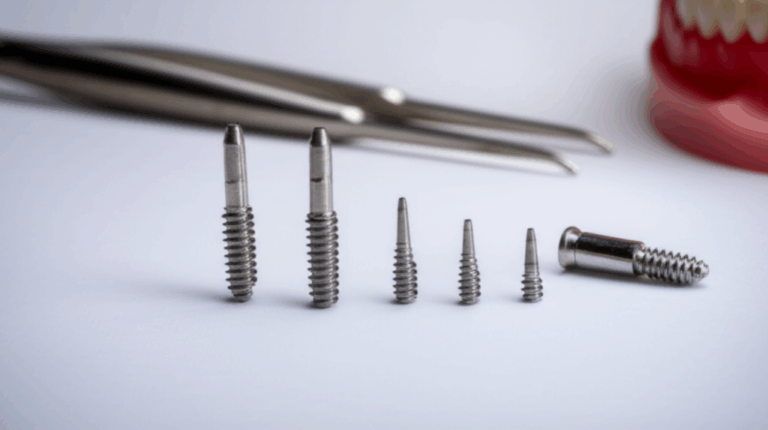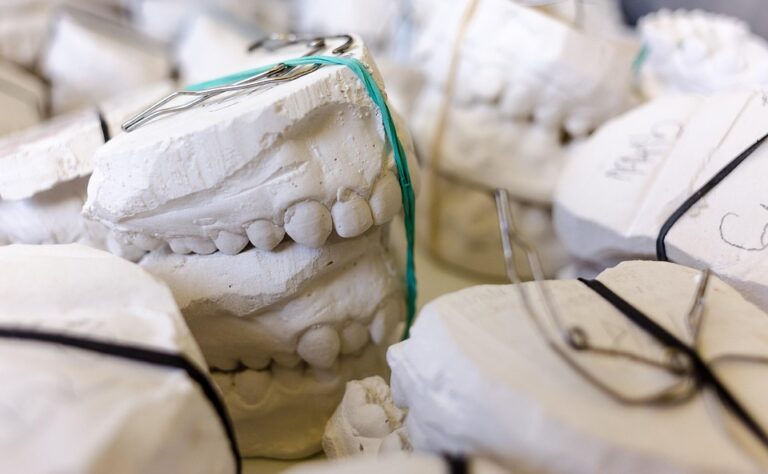
How Many Steps to Dental Implants? Your Clear, Simple Guide
That worrying question—”How many steps to dental implants?”—probably brought you here. Maybe you’re looking at losing a tooth, or a dentist talked about implants at your checkup, and now you feel a bit uneasy. Is the dental implant process hard? Will it take a long time? Will you have to come in for lots of visits, surgeries, and months of waiting?
If these worries have ever popped up in your mind, you’re definitely not alone. Getting a dental implant is a big deal, but knowing what’s ahead can turn mystery into clear understanding and fear into calm.
Let’s go through the steps together, from your first visit to your new strong tooth. I’ll break down each part, share the facts, and explain in plain words what it really means for you. By the end, you’ll know not just how many steps are in the dental implant process but also what to expect, when to take action, and how to take care of your new smile.
In This Article
- Understanding the Dental Implant Journey
- A Simple Step-By-Step Guide to Dental Implants
- Things That Affect Your Treatment and Timeline
- Dental Implant Success, Recovery, and Long-Term Care
- Frequently Asked Questions (FAQs)
- Key Takeaways and Easy Next Steps
Understanding the Dental Implant Journey
What Is a Dental Implant?
A dental implant is like a special fake tooth root that goes right into your jawbone. Instead of sitting on your gums (like dentures) or using the teeth next to it (like a bridge), an implant is put straight into your jaw. Your bone slowly sticks to the metal post over time, making it really steady. This strong base can hold a fake tooth—usually called a crown—so your smile looks, feels, and works pretty much like before.
How Many Steps in the Dental Implant Process?
Usually, getting a dental implant means going through 5 to 6 main steps—from the first look to the final tooth. Here’s a simple list:
Some people move through these steps pretty quickly, in a few months. Others might need extra time—maybe for more healing or extra bone. Both ways are normal!
Why Do These Steps Matter?
You should know what’s coming up. When you understand each part:
- You know about how many visits you’ll need.
- You get an idea of how long it might all take (usually a few months, maybe longer if you need extra bone).
- You can ask better questions and get ready for each part.
- Most of all, you’ll swap guessing and worry for feeling ready as you move closer to a stronger, healthier smile.
A Simple Step-By-Step Guide to Dental Implants
Let’s walk through what really happens. Think of this like your map for the dental implant adventure.
Step 1: First Appointment and Planning
Exam and Health History
Your first visit is where things start. The dentist will check your teeth, gums, and jaws, see how healthy your mouth is, and look at any health things (like diabetes or if you smoke) that might make things harder.
Pictures of Your Mouth
Like you wouldn’t build a house without plans, your dentist will want X-rays or other scans. These pictures show how much bone you have and where things like nerves or sinuses are. This helps your dentist place your implant in the right spot and avoid trouble.
Your Own Plan
Now you and your dentist will talk over your choices: Do you need only one implant, or more? Are there a few teeth missing? Does your dental care help your mouth heal well? You’ll talk about options, money, and what to hope for.
Getting Ready
Sometimes your dentist will say to fix a problem first—maybe treat puffy gums, pull out a hurting tooth, or clean up an infection. It’s better to fix these first so your implant can last.
Step 2: Extra Procedures (Only If Needed)
Not everyone does this step. But the jawbone must be strong and deep enough for an implant. If your bone has shrunk (maybe it’s been a while since the tooth was gone or there was an infection), you might need:
Bone Grafting
Think about planting a tree; you want good soil. Bone grafting adds or builds up bone using stuff from your own body, another source, or a safe material. Sometimes it’s a tiny fix. Sometimes it’s bigger, like a sinus lift (raising the floor of your sinuses for upper back teeth).
##### Normal Healing Time: 4 to 9 months
You have to wait for your body to make the new bone strong enough to hold an implant.
Step 3: Dental Implant Placement
This is the big moment: the dentist puts the metal post into your jawbone.
Making You Comfortable
You’ll get numbing so you don’t feel pain. Some people also get medicine to relax.
Placing the Implant
The dentist opens your gum, makes a small hole in the bone, and puts in the post. Think of this as the anchor for your new tooth.
Closing Up
The dentist may sew up your gums or put on a healing cap that sticks out a bit. This part is usually quick and not as big a deal as some think.
Step 4: Healing and Bone Bonding (Osseointegration)
Now, your body does most of the work.
What Is Osseointegration?
Think of the metal post like a stick, and your bone is like a vine growing around it. Your bone slowly grabs onto the post, locking it in.
##### Healing Time: 3 to 6 months
Like healing a broken arm, this just needs time. Waiting means your tooth will last longer.
Temporary Tooth
If there’s an empty spot, your dentist can make a fake tooth or denture to cover it up until your implant is strong.
Step 5: Attaching the Connector (Abutment)
After the implant is stuck well to your bone, it’s time for the middle piece.
What’s an Abutment?
Think of the implant like the base, the new tooth on top, and the abutment as the screw that connects them together.
How it Works
Sometimes the abutment goes on during the first surgery. But most of the time, the dentist opens up the gum, puts on the abutment, and lets your gums heal around it for a week or two.
Step 6: Final New Tooth
Finally, you get your new tooth!
Making Molds
The dentist makes molds or scans of your mouth and abutment, so your new crown or bridge is the right shape and color. This is where a dental ceramics lab or implant dental laboratory makes your crown, bridge, or denture.
Making Your Tooth
The lab makes your crown, bridge, or denture out of strong stuff like porcelain or ceramic. The goal is for it to fit great and look real.
Putting the Tooth In
The dentist attaches the new tooth, makes sure your bite is right, and polishes it up. Now you can smile and chew like normal!
Quick Recap: Dental Implant Steps
Extra Steps: You might have a few “bonus” steps, like temporary teeth or more checkups. These help make sure everything goes right!
Things That Affect Your Treatment and Timeline
Everyone’s mouth and situation is a bit different. What decides how many steps you need, how long it all takes, and how good the healing is?
Your Health
A healthy mouth, like good soil for plants, helps healing. Things like smoking, diabetes, or puffy gums can slow the process or cause problems.
Extra Procedures
If your bone is thin or weak, bone grafting or sinus lifts can add months. If you have a bad tooth or gum disease, those need fixing first.
How Many Implants
Doing just one tooth is usually faster. Doing a bunch, or something like All-on-4, takes more planning, but the basic steps are the same.
The Kind of Implant
Some implants let you get a temporary tooth the same day (“teeth-in-a-day”), but not everyone can do these. The normal way is to wait for the implant to heal before getting the crown.
Taking Care and Following Directions
Doing what your dentist says after surgery matters a lot. Keeping up with gentle brushing, eating the right foods, and going to checkups helps your implant last a very long time.
Dental Implant Success, Recovery, and Long-Term Care
You might wonder: Is all this worth it? Are dental implants really strong and long-lasting? How bad is recovery?
High Success
Dental implants work really well. Most studies and dentists say 95-98% of implants last at least 10 years if you keep your mouth healthy. Many last 20 years or more.
What Recovery is Like
- Pain: Most people feel about the same as after a tooth out. You might just need normal pain pills.
- Swelling & Bruising: Some puffy lips, some bleeding, or some bruises are normal. Ice and resting help.
- Food: Stick to soft foods at first—like yogurt, noodles, eggs, or smoothies. Skip hard or sticky stuff until your dentist says it’s okay.
Keeping Your Implant Healthy
Brush and floss every day, use mouth rinse if your dentist says, and visit your dentist twice a year or so.
If you don’t take care of your implant, you could get an infection (called peri-implantitis). Good daily cleaning and checkups keep it healthy.
How Long Do Implants Last?
If you care for them, over 90% of implants are still working well 10 to 15 years later—and many go far longer. They last much longer than most other tooth fixes and don’t get cavities. Strong materials like zirconia and titanium help your new tooth last.
Frequently Asked Questions (FAQs)
Some common worries and questions about dental implants:
Does It Hurt to Get a Dental Implant?
Most people are surprised it doesn’t hurt much. With numbing and gentle care, you won’t feel pain during the work. After, you may be a bit sore and swollen, but it doesn’t last long and normal pain medicine is enough.
Can I Get an Implant Right After a Tooth is Pulled?
Sometimes, yes! If your bone and gum are healthy, the dentist can sometimes put in the implant the same day they pull the tooth (that’s an “immediate implant”). If there’s infection or weak bone, you may need to wait a while to heal.
How Many Visits Will I Need?
Plan on 5 to 7 visits over a few months:
Some steps can be done together, and you might need extra short checkups too.
How Long Does the Whole Thing Take?
For one simple implant (no extra work needed), most people get their new tooth in 4 to 9 months. If you need bone added or more healing, it can take up to a year.
What Does a Dental Implant Cost?
Prices change depending on:
- Where you live
- Experience of your dental team
- Whether you need bone added
- Type of fake tooth (single, bridge, or denture)
Most people spend $3,000 to $5,000 for one implant, but the price can be more or less. Dental insurance doesn’t usually cover it, but many dental offices have payment plans.
Key Takeaways and Easy Next Steps
The Main Things to Know
Here’s the recap you need:
- Dental implants have 5 to 6 main steps, from planning to your new tooth.
- Time: Most people finish in 4 to 9 months, but extra work can make it longer.
- Success: Implants work over 95% of the time if you care for them.
- Care at Home: Brush, floss, and see your dentist regularly.
- Easy Recovery: Most people say the healing isn’t too bad.
- Cost: The price isn’t small, but many offices do payment plans.
- Still Unsure? There are no dumb questions. Asking about every part helps you feel more in control.
What to Do Next
- Ready? Book a visit with your dentist or an implant specialist. Bring this guide and your questions.
- Not Sure if You’re a Good Fit? Talk to your dentist. They’ll check your mouth and health and talk over all your choices—implants work for lots of people but not everyone.
- Learn More: If you want to read about teeth health or dental care, you can find plenty to learn at your own speed.
Remember, every dental implant journey is different—just like every smile. The best way to get a great outcome is to know the process, pick skilled dentists, and take good care at home. You aren’t just fixing a tooth; you’re making it easier to eat, talk, and smile for many years—feeling good and looking good.
If you still have questions or want to talk more about your options, reach out to your dentist or oral surgeon. Your new smile is just a few simple steps away!








